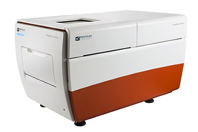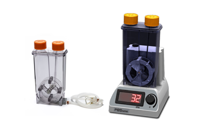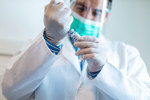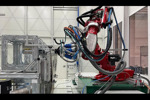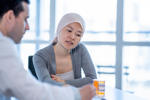 Mixing And Blending, Powder Flow, Food Texture, Bulk Mixing, and Food Processing news and information
Mixing And Blending, Powder Flow, Food Texture, Bulk Mixing, and Food Processing news and information
PRODUCTS
-
A scalable, high-throughput, high-content screening solution with 7-channel high-intensity laser light source and machine learning capabilities.
-
The MM1-0626SCSP2 is a highly linear passive GaAs double balanced MMIC mixer suitable for both up and down-conversion applications.
-
This line of ruggedized, precision C-mount lenses is the perfect choice for many demanding industrial applications, characterized by their exceptional resistance to shock and vibration.
-
Test of Homepage Bucket HTML In Product Document TypeTest of Homepage Bucket HTML In Product Document Type. Test of Homepage Bucket HTML In Product Document Type. Test of Homepage Bucket HTML In Product Document Type Test of Homepage Bucket HTML In Product Document Type.
Test of Homepage Bucket HTML In Product Document Type Test of Homepage Bucket HTML In Product Document Type.
-
The PBS-0.5 Mini single use bioreactor is compatible with 300mL– 500mL working sample volumes and the best starting point for optimizing cell therapies by leveraging the benefits of vertical-wheel mixing that can be easily scaled up for larger sample volumes.
WHITE PAPERS AND CASE STUDIES
-
eClinical Platform Accelerates COVID-19 Treatment Trial By 2 Weeks
Examine a COVID-19 treatment trial that utilized integrated EDC, eConsent, eCOA, RTSM, and TeleVisit solutions, all within a single platform, to address three critical challenges.
-
The Role Of Hexapods In High-Precision Machining
A custom hexapod was introduced at ILA Berlin 2024, enhancing precision in aircraft construction. This 6-DOF system improves contour machining of CFRP components, reducing manufacturing times and costs.
-
Achieving Healthy CRO Growth Through Agility
Discover how George Clinical, a contract research organization based in Sydney, Australia, achieved robust CRO growth by harnessing the power of agility with Merative.
-
The Value Of Peptones For Enhancing Biopharmaceutical Productivity
Peptones, versatile media additives derived from various sources, offer numerous benefits for biopharmaceutical production.
-
Maximize Efficiency Of Meter Reading With A Cellular Network
Explore how a utility was able to improve their level of service to the community, increase accuracy in water metering and ensure safety for meter technicians.
-
Aegea Creates Brazil's Largest 3D Digital Sanitation Map As Part Of Their Intelligent Infrastructure Program
In this case study, learn about a highly interactive 3D map representing over 1,000 sanitation facilities in a virtual reality environment which optimizes performance, service availability, and reliability.
-
Educating Globally Diverse Populations Through Branding & Visuals
See how this customized educational approach significantly enhanced recruitment and retention efforts, helping to ensure a more inclusive trial for Nonobstructive Hypertrophic Cardiomyopathy (nHCM).
-
Analytics–Powered Approach To Patient Recruitment Strategy
In a Phase 3 psychiatry trial, a pharmaceutical company partnered with Signant to revolutionize patient recruitment through data-driven site selection using PureSignal Analytics.
-
Liquid Oxygen Supply For Ozone Generation
Learn about a project to procure and fabricate large bore piping to reduce field installation.
-
How Cara Therapeutics Increased Compliance And Reduced Study Team Burden
Delve into the partnership that helped Cara Therapeutics achieve a significant milestone in their clinical research efforts to transform the lives of chronic pruritus patients.
-
How Waterloo Harnessed Qatium's Digital Platform
Read about the City of Waterloo, that needed an intuitive, low-cost tool to empower operators without requiring specialized technical expertise.
-
Accelerate Your Oncology Breakthroughs
Finding the right partnership can help your oncology clinical trials overcome trial complexities through strategic planning, a deep scientific understanding, and operational excellence.
NEWS
-
Topsoe Announces Plans For New State-Of-The-Art Us Electrolyzer Factory For Clean Hydrogen4/19/2024
Topsoe, a global leader in carbon emission reduction technologies, announced plans to build a cutting-edge factory in Chesterfield, Virginia. The factory will manufacture advanced, energy efficient Solid Oxide Electrolyzer Cells (SOEC) that are essential to the efficient production of clean hydrogen and derivatives like eAmmonia and eMethanol.
-
Motivosity Launches Lifestyle Spending Accounts To Help Companies Offer Flexible, Hassle-Free Employee Perks5/27/2025
Motivosity, the leading people-first employee recognition and rewards platform built for today’s workforce, is proud to announce the launch of its new Lifestyle Spending Accounts (LSAs) program.
-
Field Squared Unveils AI-driven Advanced Scheduling Module6/10/2024
Field Squared is excited to introduce the AI-driven Advanced Scheduling Module, a groundbreaking addition to our Enterprise Field Service Management and Enterprise Asset Management platform.
-
Securely Propagating Entanglement At The Push Of A Button7/11/2024
Entanglement, Einstein's "spooky action at a distance", today is THE tool of quantum information science. It is the essential resource for quantum computers and used to transmit quantum information in a future quantum network. But it is highly sensitive.
-
Digital Trial Reduces I&I Wastewater Costs9/10/2024
Inflow of stormwater and infiltration of groundwater into wastewater systems is a constant operational challenge for managers. Now, Håbo municipality in Sweden is tackling the challenge head-on with an innovative digital approach, says Adam Wood, chief product officer at water analytics company Infotiles.
ABOUT
Mixing and Blending
Mixing and blending are terms that have specific meaning in the food industry. Most food processing experts use the word mixing to describe the process of combining wet and dry materials.
Blending is the term used to describe the process of combining only dry ingredients. The term blending is generally reserved for powders, flakes and granules of varying bulk densities and particle size that require gently blending and minimal contact with blender blades.
Agitation is often used synonymously with the term mixing. However, in food processing, agitation is used to ensure the mixing process to get a homogenous mix is completed faster.
Many industries require the mixing of free-flowing powders. The art of mixing involves different dilution geometries (a geometry is a way of combining unequal amounts of fine powders to ensure an equal distribution).
The geometric mix used depends on the size distribution, shape, particle density, composition and internal structures. Other properties include flow ability, bulk density, mixture quality, dustiness and properties of segregation.
Industrial mixers are used to do the blending and mixing. The shape and hardness of the materials being mixed affects the horsepower required to run the mixer. The type of mixer used in a production line varies depending on the materials that need to be mixed or blended. Paddle mixers are often the best choice for production line mixing because they are easy to clean, have less surface area, and have a minimal number of parts.
Mixing and blending is generally a sub-process within an overall process cycle so when placing a mixer it is important to consider how it integrates into the whole system. That includes impacts to both upstream and downstream product handling.

